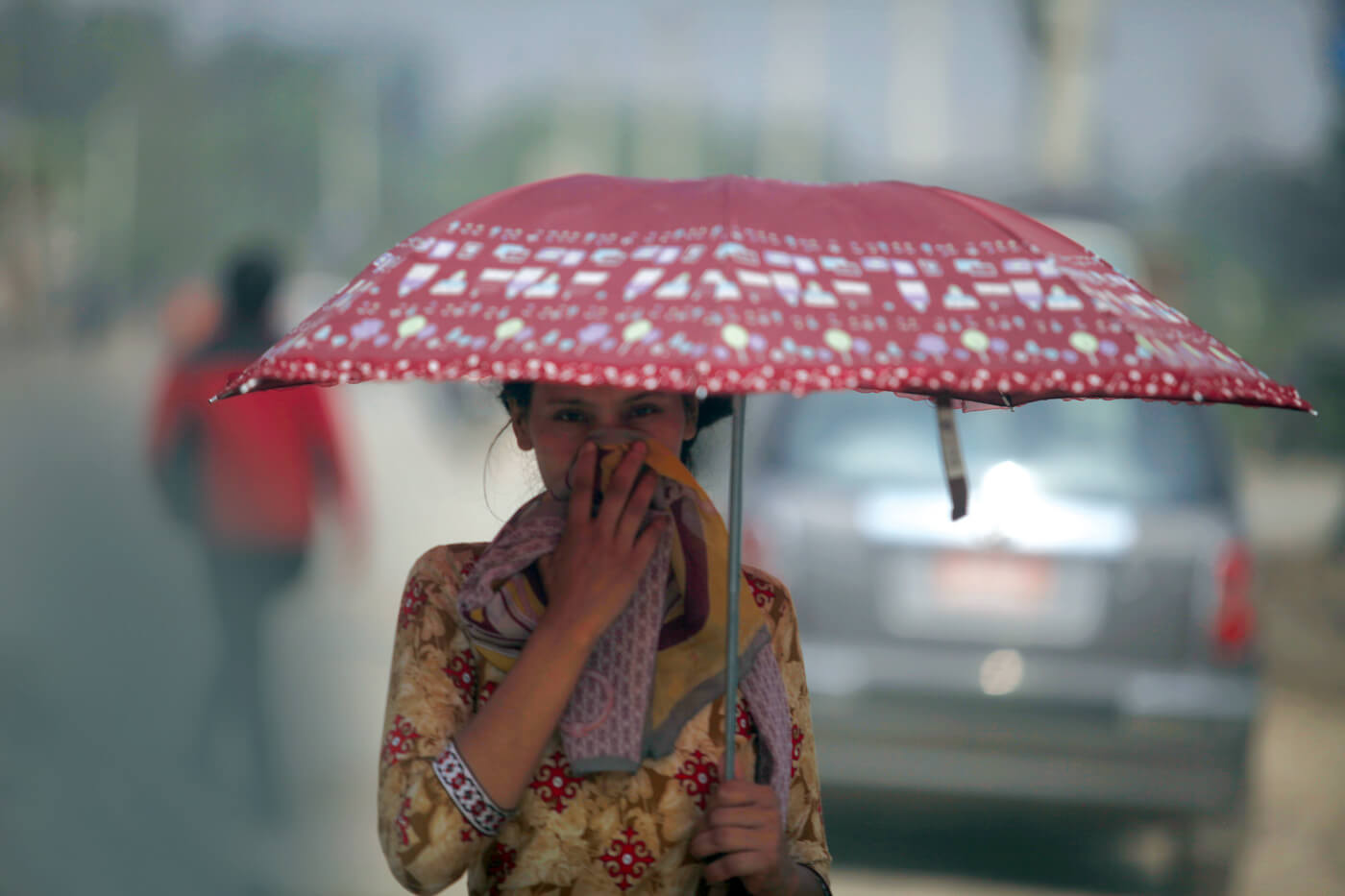Bad Air

A public perception survey among Kathmandu Valley residents conducted last year shows near unanimous agreement that pollution levels are bad and getting worse. The survey was conducted via social media and asked residents of Kathmandu Valley about the pollution level in their neighbourhood, their commuting habits and their perspective on actions needed to improve air quality.
Carried out by Air South Asia and Clean Up Nepal, the survey results understandably show that with a few outliers, most people living inside the Ring Road found the air they breathe Bad or Very Bad. Generally, the air was considered to be cleaner the further the respondents lived from the city core. However, the perception of air pollution was worse along busy intersections outside the centre, like Chabahil, Kalanki or Koteswor.
Only along the foothills, in Mata Tirtha, Budanilkantha or Changu Narayan, did people feel the air quality was better. And there was only respondent (in Godavari) among 212 interviewed who considered air quality to be Excellent.
Read also:
How to clean up Kathmandu’s air, Anil Chitrakar
Solution to pollution, Pallavi Pant and Anobha Gurung
Asked to answer if air pollution had diminished their quality of life, 99% of respondents said it had. Asked how, most noted respiratory problems, chronic cough, sore throat, asthma attacks, lack of concentration and skin rashes, while other complained of clothes getting dirty. Interestingly, some included foul smell from nearby streams as ‘air pollution’, and said the stench was ‘unbearable’. Some said they did not take morning walks anymore, or venture into the streets during rush hour, and if they did, always wore masks.
“Having fresh air to breathe is a human being’s most basic right and that right has been violated to an unimaginable extent in Kathmandu,” said one Naya Bazar respondent.
Asked what they think are the main sources of air pollution in their area, more than 90% cited road-side dust caused by widening and delayed construction, vehicle pollution and open garbage burning. (see graph) Many noted that open spaces were shrinking, trees were being cut and plastic waste was burnt openly on streets. Outside the Ring Road, many of the complaints were about brick kilns and factories emitting smoke.
Read also:
One Atmosphere, Arnico Pandey
Air pollution is more dangerous than smoking, Sonia Awale

Asked how they were coping with air pollution, most said they wear masks when outdoors and have cut down on going out for walks. Many said they now use public transport, avoid motorcycles, plant trees or take part in cleanup campaigns. Asked why they have not taken measures to reduce air pollution some said it was too large a problem and one individual’s action would not make a difference. Even those who wanted to contribute said they did not know how they could help reduce air pollution.
Many were of the opinion that the government had not done enough to reduce pollution, and among their realistic and do-able suggestions for improving air quality were:
Better public transport
Subsidy for electric vehicles
Timely completion of road construction
Tree planting
Proper waste management
Relocation of brick kilns
“If the dust from the roads is minimised, half the pollution problem will be solved,” felt one survey respondent in Maitidevi. However, when asked if they were satisfied with the government’s actions to date to control air pollution, a majority (84%) said they were not satisfied at all, and no one (0%) said they were satisfied to a large extent. (see chart)
Read also:
Toxic bubble, Ajaya Dixit
#Beat Air Pollution, Editorial
According to one resident of Bhaisepati: “The government could do lots more, but it is not willing to do anything although it has plenty of funds. They should get real experts to work on this problem.”
Air pollution in Kathmandu appears to have got so bad that it is affecting people’s choice of where to live. This could ultimately reduce land prices along areas considered heavily polluted. Kathmandu residents who can afford it have already bought farms in surrounding districts, which have been sold by villagers moving in the opposite direction to Kathmandu, or abroad. Many say they are fleeing air pollution in the Valley. Indeed, some respondents even said they are thinking of relocating outside the capital, or even emigrating because of the bad air.
Some, like this respondent in Thapathali, even noted that the family’s medical expenses had shot up because of medical treatment for respiratory ailments: “The air quality is getting worse compared to previous years. The air we breathe mainly contains particulates that are inhaled and affect our respiratory system. We are suffering from frequent headaches and eye irritation. We have to spend a lot of money on expensive medicines. If the air quality improved, we could use the money for recreational activities to improve our physical fitness and mental health.”
Read also:
Green sticker = green light to pollute, Sonam Choekyi Lama
Poisoning the air we breathe, Sonia Awale




